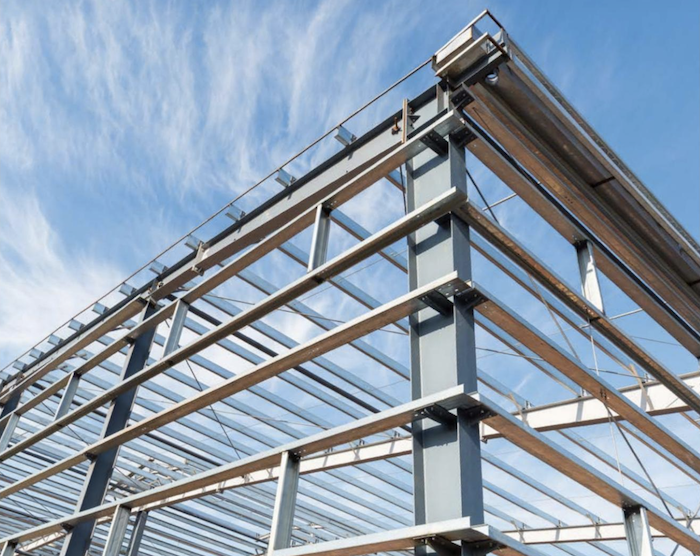
Fire endurance testing for buildings
April 5, 2023
By G. Abbas Nanji
Fire resistance designs are published with unrestrained and restrained conditions.
As per the National Building Code of Canada (NBC), the fire ratings of structural steel members and floor and roof assemblies are to be determined based on tests conducted in accordance with CAN/ULC-S101, Standard Method of Fire Endurance Tests of Building Construction and Materials. Based on these fire tests, certification and testing laboratories publish designs with unrestrained and restrained conditions.
For conventional steel construction, comprising steel beams and an open-web steel joist (OWSJ) with metal deck and concrete topping, the standard provides for both the restrained and unrestrained ratings to de determined from one fire test.
The steel members are protected by thermal insulating materials. The most common of these are sprayed applied gypsum and cementitious-based materials, intumescent and mastic coatings, gypsum board and ceiling membranes.
As required by the standard, the temperature of the test specimen is measured with thermocouples, which are installed on the specimen’s unexposed surface and in the steel members. The specimen is constructed in a rigid steel frame, which restrains the thermal expansion of the structural members; rotational restraint is not provided.
The fire test is conducted with the specimen loaded as close as practical to its factored resistance. The loads are calculated in accordance with the appropriate design standard, as published by the Canadian Standards Association (CSA) Group.
The underside of the assembly is exposed to a fire controlled by a time temperature curve. The fire exposure curve increases monotonically during the entire test period, implying an inexhaustible supply of fuel. The temperature specified in the standard is based on cellulose fire.
Representative temperatures of the fire at during the test are shown in Table 1.
Table 1: Fire test time and temperature.
Time (hours:minutes) Temperature (degrees C)
0.00 20
0.30 843
1:00 927
2:00 1,010
3:00 1,052
4:00 1,093
The limiting criteria to determine the fire endurance period are as follows:
- Temperature rise limit on the unexposed surface of the test assembly.
- No hot spots or opening created on the unexposed surface of the test assembly.
- The ability of the test assembly to support the test loads.
- Temperature of the structural member(s); this represents structural failure to support the test load based on loss strength at elevated temperatures.
The unrestrained endurance period is determined when any one of these four criteria is exceeded. For a restrained fire endurance period of one hour or less, the requirements are the same as for an unrestrained endurance period. For a restrained endurance period of more than one hour, the restrained rating is based on criteria #1, #2 and #3 and the temperature criteria of the structural member are at half the endurance duration, but not less than one hour and not more than twice the unrestrained endurance period.
The fifth edition of the standard, issued in 2014, was revised to include test requirements to address loaded unrestrained beams using deflection and rate of deflection criteria as an alternate to the beam temperature criteria. This made it possible for the unrestrained test and restrained test to be conducted separately on duplicate test specimens.
This change was driven by new types of construction, like composite beams, where a steel beam is partially or fully encased in the concrete floor. In this type of construction, unprotected and partially protected parts of the steel member exposed to a fire would exceed the temperature criteria very early during the endurance test, while the test assembly would still be capable of supporting the test load.
In these cases, the unrestrained test is conducted on the specimen. For the restrained endurance period, a separate fire test is conducted on a duplicate test specimen restrained in a rigid frame.
When two different tests are conducted on identical test specimens, the limiting criteria #1, #2 and #3 are also applicable. The temperature criteria of the structural member, however, are replaced with a limiting deflection and rate of deflection criteria.
From the results of the fire endurance fire test, certification and testing agencies publish fire resistance ratings to the closest shorter duration.
For the design professional, Appendix A in the fire test standard provides a guide to determine the conditions of thermal restraint for floor and roof assemblies and for individual beams in buildings.
Abbas Nanji is a professional engineer and employed as a senior materials specialist for LRI Fire Protection and Building Code Engineers. For more information, visit www.lrifire.com.
This article originally appeared in the March/April 2023 issue of Canadian Consulting Engineer.
